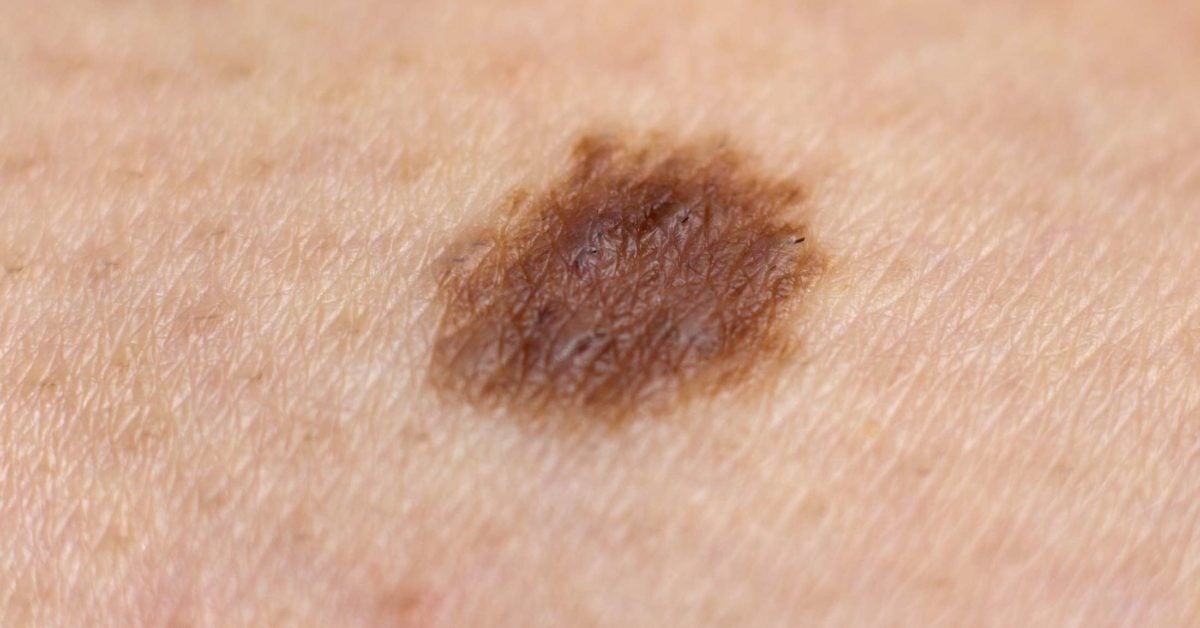Mole on Scalp: Types of Moles, Risks, and Warning Signs of Melanoma
Table Of Content

The doctor will remove all or part of the skin that looks abnormal. Usually, this procedure takes only a few minutes and can be done in a doctor's office, clinic, or hospital. The sample will be sent to a lab and a pathologist will look at the tissue under a microscope to check for melanoma.
Congenital melanocytic naevus
When melanoma occurs in people with brown or Black skin, it's more likely to occur in a hidden area. Excision is a very common technique for mole removal. After cleaning and numbing the area, your surgeon uses a scalpel to separate your mole from the rest of your skin.

What are the complications of melanocytic naevi?
If you have several moles or a history of skin cancer, it’s best to have an annual mole check from a dermatologist. Melanomas also can develop in areas of the body that have little or no exposure to the sun. These areas may include the spaces between the toes and on the palms, soles, scalp or genitals. These are sometimes referred to as hidden melanomas because they occur in places most people wouldn't think to check.
What is a dysplastic nevus?
Researchers estimate that the risk of melanoma is about 10 times greater for someone with more than five dysplastic nevi than for someone who has none. Although common moles are not cancerous, people who have many small moles or several large ones have an increased risk of developing melanoma (1). But increased numbers of atypical moles on your body raise your skin cancer risk. If you have 10 or more atypical moles, you’re statistically 12 times more likely to eventually develop melanoma.
Symptoms of cancerous moles
And children who haven't been protected from sun exposure tend to develop more moles. Monitoring moles and other pigmented patches is an important step in detecting skin cancer, especially malignant melanoma. UV radiation has been linked to a higher melanoma risk. And children who haven't been protected from sun exposure tend to grow more moles. The only way to diagnose melanoma is to remove tissue and check it for cancer cells.
Where skin cancer develops
Melanoma starts when melanocytes develop changes in their DNA. A cell's DNA holds the instructions that tell a cell what to do. In healthy cells, DNA gives instructions to grow and multiply at a set rate. The instructions tell the cells to die at a set time.
Possible cure for baldness discovered - news.com.au
Possible cure for baldness discovered.
Posted: Fri, 23 Jun 2023 07:00:00 GMT [source]
What is the outlook for melanocytic naevi?
Over-the-counter antibiotic ointments such as a triple antibiotic (Neosporin, Bacitracin) are typically not recommended. In general, anything that could damage the skin in or around the mole could lead to an infection. DermNet does not provide an online consultation service. If you have any concerns with your skin or its treatment, see a dermatologist for advice. DermNet does not provide an online consultation service.If you have any concerns with your skin or its treatment, see a dermatologist for advice.
When To Call the Doctor
Healthcare providers recommend that you do not use any at-home treatments on your moles. If you are concerned that a mole is changing or if you see worrisome signs, please contact your dermatologist to have the mole examined. They feel like a firm nodule that moves around when you touch it.

Skin cancer types: Melanoma Signs and symptoms
Bacterial infections of the skin can be contained within the mole or be widespread. A widespread bacterial infection of the skin is known as cellulitis. Cellulitis is most commonly caused by staphylococcus (staph) or streptococcus (strep) bacteria, which are generally present on the skin in low levels. During an infection, these bacteria grow to abnormally high numbers. A mole can become infected from scratching or some other irritation. An infection can also be caused by the presence of a foreign organism, such as a fungus, or virus.
A dermatologist is a medical doctor who specializes in diagnosing and treating diseases of the skin. It’s generally a quick, outpatient procedure that allows your healthcare provider to test the mole for skin cancer. Some people also have moles removed for cosmetic reasons.
Melanomas also can happen in areas that aren't as exposed to the sun. This includes the soles of the feet, palms of the hands and fingernail beds. These hidden melanomas are more common in people with brown or Black skin.
'Cindy Crawford has her mole and I have my hair' – former Miss Ireland Olivia Tracey says turning silver saved her career - Irish Independent
'Cindy Crawford has her mole and I have my hair' – former Miss Ireland Olivia Tracey says turning silver saved her career.
Posted: Sat, 06 Apr 2024 07:00:00 GMT [source]
If you’ve already experienced irritation when attempting to remove the hair, you can ask your dermatologist to remove the mole. On the whole, it’s important that you speak with your doctor about any symptoms you’re experiencing. A dermatologist can provide a proper diagnosis, and select a personalized treatment that will help restore health to you hair and scalp. Alopecia areata is an autoimmune condition that is characterized by “round patches of hair loss on the scalp,” although it can occur elsewhere on the body, Agbai says. Melanocytic naevi sometimes change for other reasons than melanoma, for example following sun exposure or during pregnancy. Atypical naevi usually occur in fair-skinned individuals and are due to sun exposure.
Comments
Post a Comment